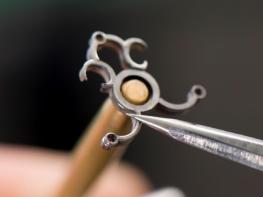Today, watch brands talk more and more about the finishing of their movements. This word “finishing,” which originates in the French finissage, is a little bit confusing for the uninitiated, but makes sense when you view it like this: a watch movement that has been tooled, assembled, and regulated will bear distinct marks of what it has gone through, which are not very pretty. In days gone by, this was not so very important as open case backs were not de rigeur in high watchmaking until the late 1980s. Thus, most people did not get to see the movements inside their cases – only the watchmaker had that privilege.

A well-finished movement, therefore, was a distinct sign of an haut de gamme, haute horlogerie watch. This means that the movement has been gussied up, so to speak, to make it visually aesthetic and free of marks and scratches. There are brands that claim that finishing improves the mechanical functions of the movement. Audemars Piguet’s Martin Wehrli once told me that perlage on the inside of the case back would attract any dust or impurities that found their way inside a case, thereby deflecting it from entering the movement proper. Most experts think this theory is not founded in scientific fact, but perhaps.
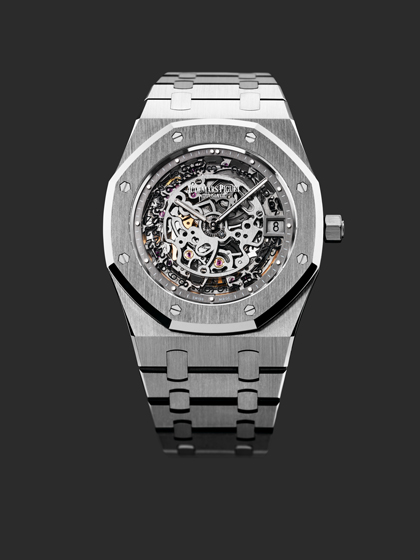
What is fact, however, is that finishing makes a movement mechanically aesthetic. One can even speak of beauty when one sees a finely finished movement. Beveling (also known as chamfering) is one of the cornerstones of finishing. This technique sees the watchmaker “breaking” the edge of a component (plate, bridge, cock, etc.) at a uniform angle of 45° and giving it a high polish. This practice simultaneously removes residual burrs left behind by machining, which is indeed important to the proper technical functioning of a mechanical watch. If a movement is not beveled, it must at least be deburred (also called trimming). Additionally, Giulio Papi of Audemars Piguet Renaud et Papi (APRP) explains that the polishing involved in beveling also limits corrosion to the predominately brass components of a mechanical movement.
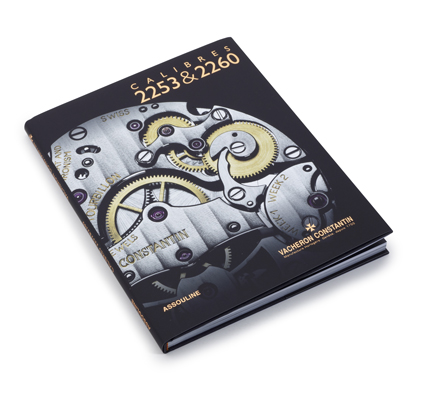
Aside from using untreated and uncoated German silver (an alloy of copper, zinc, and nickel also known as nickel silver) for the cocks, bridges and plates of its movements, A. Lange & Söhne is also known among connoisseurs for its astoundingly fine finishing – which the German brand partially achieves by assembling its movements twice. This fact in itself is unique, and the reason for it is in great part to preserve the perfect finishing of the tricky untreated German silver components, where even a misplaced fingerprint can lead to undesired marks and easy corrosion.
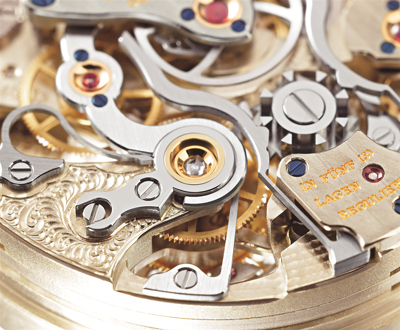
Some of the requirements of good beveling include a regular, smooth surface and a constant 45° width with parallel edges. Another masterful marque in this arena is Greubel Forsey, whose La Chaux-de-Fonds factory employs more technicians for finishing than actual watchmakers. Naturally, like the brand itself, the finishing of its predominately German silver bridges and plates is not showy, but rather rooted in historical technique.
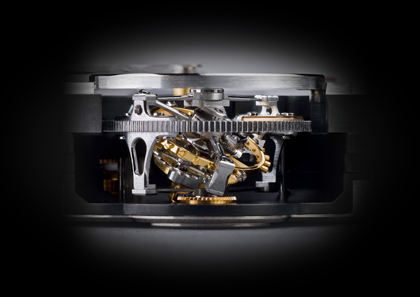
Vacheron Constantin’s book “Calibres 2253 & 2260” by Alexandre Ghotbi aptly explains that “‘Finishing’ is the term referring to the extremely time-consuming manual embellishment of movement components, which can actually represent one-third or more of the time spent on making a timepiece. It is the extreme care and attention given to the smallest details, whether they are visible or not, that makes all the difference.” Vacheron Constantin systematically applies vigilant quality control to hand-finished components to ensure their compliance with the rules of high watchmaking and those of the Seal of Geneva, which all of this brand’s movements are stamped with.
This book provides great insight into the concepts behind and technology of two of Vacheron Constantin’s most complicated movements. A must-read for any fan of high horology.
124 Pages • colour ill. • Format : 24.5 x 31.5 cm.
Prix : CHF 66.00 • € 55.00
ORDER THE BOOK
